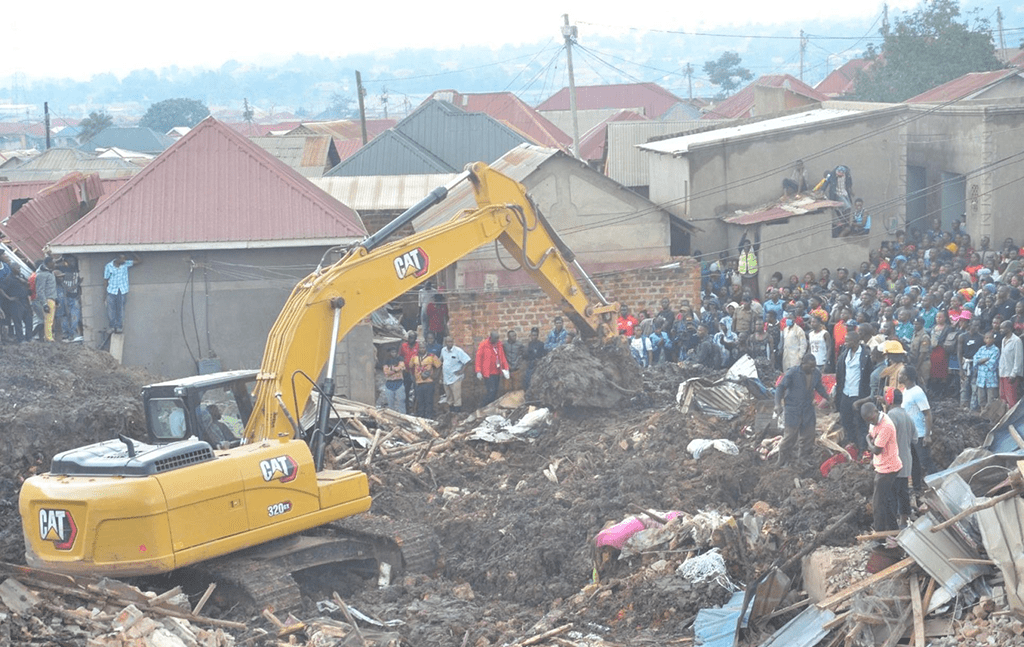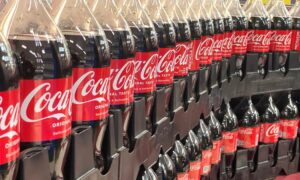
An explosion of dangerous methane gas could have triggered the Kitezi landfill disaster. Some of the survivors of the incident reportedly heard some explosions from the direction of the buried houses before the collapse of the landfills.
On Tuesday, Kyadondo East MP, Haroon Muwada Nkunyingi in Parliament, advanced the possibility that a blast from the garbage might have triggered the incident.
“The witnesses are reporting that it was a blast that blew up the sand and garbage and the smoke. That is the narrative from the residents. They even continue to allege that they saw Chinese installing pipes in the heap of garbage because there were two heaps,” said Muwada.
“We don’t want to imagine and assume that it was a mere slide by the landfill. There is more likelihood that it was either an accident or an intentional mistake or negligence by the Chinese or KCCA,” said Muwada.
State Minister for Kampala, Minsa Kabanda in response said no Chinese nationals were operating near the Kiteezi landfill. She did not comment about the blast. The State Minister for Disaster, Lillian Aber did not mention whether on the possibility of an explosion.
The Kitezi site has been developed mainly as a land raise with only limited basal engineering reportedly carried out before landfill development. A scientific explanation and real landfill accidents from methane gas explosions exist.
History of landfill explosions
One such explosion occurred in1986 in Loscoe England when a landfill ground gas explosion, badly injured three people in a bungalow.
At Loscoe, the incident occurred because of a lack of understanding of the process operations and necessary controls, and, as such, the explosion could be seen as a direct consequence of the landfill operation. Another landfill explosion was in Turkey.
On 28 April 1993, an “explosion” took place, followed by the displacement of a large mass of solid wastes at Ümraniye-Hekimbaşi open dump accident that engulfed II houses causing the death of 39 people.
The Kiteezi case early warning in 2008 Uganda Radio Network has come across documentary evidence warning of a possible methane gas explosion at Kiteezi then under the management of the defunct Kampala City Council (KCC).
The warning was contained in an Environment Impact Assessment (EIA) report prepared by KCC for a gas-flaring project that KCC has prepared for funding under the UN Framework Convention on Climate Change’s Clean Development Mechanism (CDM)
CDM project activity was suggested as part of the investment package planned for the Solid Waste Management component of the World Bank-funded Kampala Institutional and Infrastructure Development Project (KIIDP).
Gas extraction and flaring (LFG) by KCC was to control gas both in terms of risk from the explosion and to reduce harmful emissions of greenhouse gases.
The EIA report warned of subsurface migration of landfill gas from landfills to other areas within the landfill property or outside the landfill property.
“Most subsurface migration occurs at older, unlined landfills because there is a minimal barrier for lateral migration,” reads part of the report.
The Kiteezi landfill had outlived its lifetime in 2008 when the EIA report was prepared. The report also revealed that the landfill had experienced a collapse on the southeast side before 2008.
“Which may have been due to the subsurface migration of the landfill gas. Incidentally, there was no habitation on this side of the site and hence local citizens did not witness large-scale exposure to NMOC,” said the report.
Landfill gas also includes small amounts of nitrogen, oxygen, ammonia, sulfides, hydrogen, carbon monoxide, and non-methane organic compounds (NMOCs) such as trichloroethylene, benzene, and vinyl chloride.
“Since landfill, gas contains approximately 50 percent methane (a potentially explosive gas) it is possible for landfill gas to travel underground, accumulate in enclosed structures, and ignite,” said the EIA.
The report further warned that possibly the biggest health and environmental concerns were related to the uncontrolled surface emissions of landfill gas into the air.
“Landfill gas contains carbon dioxide, methane, VOC, HAP, and odorous compounds that can adversely affect public health and the environment,” it said.
Landfill Gasses (LFGS) mostly constitute methane (CH4) (50–60%), carbon dioxide (CO2) (30–40%), and the Hazardous air pollutants (HAPs), THC, and volatile organic compounds (VOCs),”
Science of gases at landfills The decomposition of waste also brings about the generation of gases, mainly a mixture of methane and carbon dioxide (about 50–50% in anaerobic conditions), known as ‘biogas’.
Methane is lighter than air and highly flammable. If it enters a closed building and the concentration increases to about 5–15% in the air, a spark or a flame is likely to cause a serious explosion.
Why is methane a fire hazard?
Methane burns very easily and often is used as natural gas for cooking and heating. It is lighter than air and collects at the top of enclosed spaces. When it rises through the soil and enters buildings, it gets trapped in the lower parts of a building, such as the basement.
As more methane enters the building, the level in the air increases. When the methane level reaches 5 percent of the air, it can cause a fire or an explosion if a spark or flame is present.

















